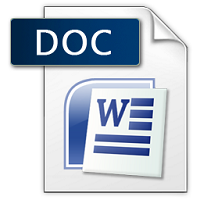₹198.00
Scroll down for Match your questions with Sample
Note- Students need to make Changes before uploading for Avoid similarity issue in turnitin.
Another Option
UNIQUE ASSIGNMENT
0-20% Similarity in turnitin
Price is 700 per assignment
Unique assignment buy via WhatsApp 8755555879
Description
| SESSION | AUG/SEPT 2023 |
| PROGRAM | MASTER OF BUSINESS ADMINISTRATION (MBA) |
| SEMESTER | III |
| COURSE CODE & NAME | DMKT304– MARKETING RESEARCH |
Assignment Set – 1
- Explain non-probability techniques and various types of non-probability sampling techniques with suitable examples. 10
Ans 1.
Non-probability sampling techniques are a subset of sampling methods used in marketing research where the samples are gathered in a process that does not give all the individuals in the population equal chances of being selected. These methods are often used when the feasibility of probability sampling is low due to practical constraints like time, budget, or the lack of a clear frame listing all Its Half solved only
Buy Complete from our online store
https://smuassignment.in/online-store/
MUJ Fully solved assignment available for session SEPT 2023.
Lowest price guarantee with quality.
Charges INR 198 only per assignment. For more information you can get via mail or Whats app also
Mail id is aapkieducation@gmail.com
Our website www.smuassignment.in
After mail, we will reply you instant or maximum
1 hour.
Otherwise you can also contact on our
whatsapp no 8791490301.
- What are the nine types of Experimental designs? 10
Ans 2.
Experimental designs are a cornerstone of marketing research, offering a structured approach to test hypotheses by manipulating one or more variables while controlling others to determine their effect on a dependent variable. These designs are pivotal in establishing causal relationships and are extensively used in various fields, including marketing. Let’s delve into the nine types of experimental
- Explain in brief about focus group interview, its requirement, and the problems that may arise from using focus group 10
Ans 3.
Focus group interviews are a qualitative research method used extensively in marketing research. This approach involves gathering a small group of individuals, typically between six to twelve participants, to discuss and provide feedback on a particular product, service, concept, or marketing campaign. The discussion is guided by a trained moderator who facilitates the conversation, ensuring that each participant’s voice is heard while steering the dialogue to cover specific areas
Assignment Set – 2
- Discuss the various properties of scales of measurement. Give suitable examples. Also explain the types of Primary Scales of Measurement 10
Ans 4.
The concept of scales of measurement in marketing research is fundamental for understanding and interpreting data accurately. These scales are tools used to categorize and quantify variables, allowing researchers to analyze market trends, consumer preferences, and other relevant marketing data effectively.
There are four primary scales
Top of Form
- Explain the methods of consumer marketing research. 10
Ans 5.
In the realm of consumer marketing research, a variety of methods are employed to gather insights and understand consumer behavior, preferences, and trends. These methods can be broadly categorized into two types: qualitative and quantitative research methods.
Qualitative Research Methods:
These are often exploratory and used to gain an understanding of underlying reasons, opinions, and motivations. They provide insights into the problem and help to develop ideas or hypotheses for potential
- What do you understand by a “quality research report”? What are the factors that a researcher should consider while developing such a report? 10
Ans 6.
A quality research report in the field of marketing research is a comprehensive document that presents the methodology, findings, interpretations, and conclusions of a research study in a clear, concise, and systematic manner. This type of report is pivotal in helping businesses and organizations make informed decisions based on the insights and data collected during the research process. To develop a quality


